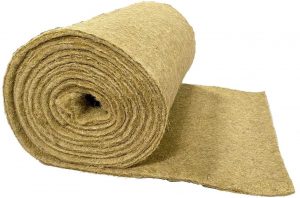
Assuming you keep your rabbits outdoors, you may often see that wire bottom cages are recommended. It’s a difficult one to pinpoint as everyone has their own opinion on rabbit wire bottom cages.
In this blog post, I’m going to go over the good, the bad and the ugly of rabbit wire bottom cages and explain our understanding on why you should avoid wire bottom cages if possible.
To begin with, if you have a domestic indoor rabbit you should be using a different type of cage. Typically a plastic rabbit cage which they can claim as their own territory.
It’s crucial to remember that rabbits have a lot of energy, so if they’re kept in a cage, it should be possible for them to run about without issue of injuring themselves.
Wire Bottom Cages are known to cause sore hocks & calluses, however, rabbits kept outside that have a solid bottom cage are prone to having worm and other parasite issues.
Another factor to take into consideration is that rabbits quite simply weren’t built to live on wire mesh flooring.
The history behind wire-mesh flooring comes directly from our inability to care enough to clean our rabbit’s cages regularly.
Wire-Flooring doesn’t exist in the wild and to state that it’s better than a solid flooring goes against everything nature has taught us.
Yes, Rabbit nails do dig into a softer mud, however, this only applies to certain areas of the world.
It’s quite apparent that humans don’t know more than nature. Plenty of rabbits live in snowy or icy areas. Some even live in a mixture of sand and dirt which can be rough on their paws, but in no situation is there anything in nature that matches a wire bottom.

Rather than taking advice from ourselves or a forum, visit an exotic pet savvy vet who has studied recently. You’ll find lots of older vets are likely to say Wire Bottom cages are fine because that’s what they were taught about.
At the end of the day, you need to put yourself into a position of picking a side to listen to and applying logic to the question at hand. The questions you should be asking are:
When it comes down to studies, you only have to search it yourself to find that the UCI also declared that ‘rodents’ and other small animals prefer solid bottom flooring in their cages.

If you’re looking to replace it, it really doesn’t matter how you do it as long as its a sturdy replacement. If you go to your local DIY depot shop they should be able to cut some wood to the dimensions you request.
One of the tricks we did when I was younger was cut the wood to the correct size and then cover it in multiple layers of resin/epoxy hardener.
This meant when we needed to clean out the cage, we could throw away the bedding, pull out the additional wood flooring and give it a wipe down without worrying about the wood rotting.
The skin at the bottom of a rabbits paw simply isn’t hard enough to be on wire meshing. Much like ourselves, rabbits have various elements of their skin which are thinner in some areas than others.
A rabbits paw contains some of the most sensitive and thinnest skin they have, making them very susceptible to cuts and infections.

This isn’t the only issue with wire mesh flooring, rabbits are also very prone to bone fractures and breaking nails. Whilst this can cause bleeding, the actual act of breaking a nail isn’t too much to worry about, it’s the potential cause of infection that can occur.
If your rabbit does fracture a bone, it can take weeks before it’s seen as rabbits are very good at hiding their pain. Rabbits will often hide their pain because they don’t want to seem vulnerable to predators.
It’s rather simple, skip the rabbit wire bottom cage and go straight into a solid floor. Once that’s done, purchase the correct bedding for your rabbits needs and clean regularly.
If you have a particularly messy rabbit (Which is uncommon), it can take only a few days before you need to change your rabbit’s litter and bedding.

If you already have a wire mesh cage, don’t worry, there are lots of cheap solutions that can help solve the issue at hand. One of these is Hemp Mats.
Hemp Mats are vegetative soil covers for your cage which is fully digestible and is high in moisture absorption.

By entering your email address you agree to receive emails from Cottontailclub. We'll respect your privacy and you can unsubscribe at any time.